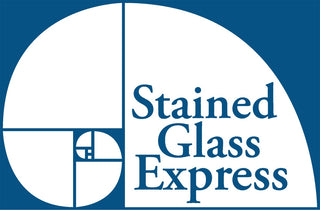Safety Glasses for Flame Working
The bottom line is these glasses are important. You are protecting your eyes from radiation, sodium flare and flying glass. It is crucial.
Burning hydrocarbons emit ultraviolet and high-energy blue light which causes eye damage. In flameworking glass, these hydrocarbons are the primary fuel source, in the form of gases like propane or acetylene, reacting with oxygen in the flame.
Types of Light Emission:
UV (Ultraviolet): The flame itself, particularly when working with borosilicate glass, emits UV radiation, which can cause long-term eye damage. The hotter the flame, the stronger the protection needs to be.
Sodium Flare: When glass is heated in a flame, a small amount of sodium (a component of most glass) sublimates and burns, producing a bright yellow light called “sodium flare”. The sodium flare comes from soda-lime glass; can cause eye strain and make it difficult to see. Common soda-lime glass is 104 Coe, 90 Coe and 96 Coe. So, we are talking CIM, Moretti/Effetre, Vetrofond, Bullseye, Oceanside. Borosilicate glass also contains sodium (less than soda-lime glass) so it can also give off a sodium flare.

IR (Infrared): The hotter the fuel burns and the hotter the glass becomes, the more infrared radiation is emitted. This can cause thermal damage to the eye, specifically to the cornea, iris, lens and retina. Repeated exposure can lead to cataracts. You must have a Shade #3 lens or higher. Your eyes are more sensitive than your skin so it might feel like the heat is acceptable against your face when it may actually be enough to damage your eyes.

The Protective Measure is eyewear. Glasses – Stained Glass Express
· Didymium Glasses are great for soft glass. 104 Coe and 90 or 96 Coe. Didymium glasses protect against sodium flare NOT IR. These lenses reduce eye strain and may give SOME protection against UV. Didymium glasses will protect against UV radiation from 360 nm to 725 nm. Nm means wavelength. You tell what range you are within by the color of the flame.
-
Red Flame: Typically corresponds to wavelengths around 620-750 nm.
-
Elements: Strontium emits a strong red color during flame tests.
-
-
Orange Flame: Falls within the range of 590-620 nm.
-
Elements: Sodium can produce a yellow-orange flame.
-
-
Yellow Flame: Generally seen around 570-590 nm.
-
Conditions: Can also appear due to the incomplete combustion of certain fuels. For example, in a gas burner, when sodium is present, the flame may appear yellow due to sodium contamination.
-
Sodium Flare Polycarbonate Lens. This is the sister to Didymium. This is a lightweight lens that is a very effective filter for sodium flare absorption in addition to providing ultraviolet (UV) protection up to 390 nm. Not only is it very comfortable for viewing under high ambient light conditions, but it also allows a high Visible Light Transmission permitting you to see in any lighting situation.
· This filter has a recommended use for lampworking on soft glass types, neon working, and clear borosilicate. This lens DOES NOT protect against IR.
· Welding Glasses. For higher-intensity (hotter flame) operations or when working with certain types of glass, welding glasses with appropriate shade numbers are recommended. After much reading, this author feels that this number is Ansi z87.1 shade 3 lens. However, be sure that it also says it protects again IR.
· Side shields are always a good idea because of flying glass.
· You need a higher rated lens (shade 3 or higher) when:
a. You are using borosilicate or quartz glass
b. Flame is over 2000 degrees and produces high UR/IR. A white/blue flame indicates increased UR/IR intensity. Another measure is the size of the glass. If the piece is at least fist-sized, it is going to require hot enough temperatures for infrared protection.
c. Torch is large and very oxygen rich.



